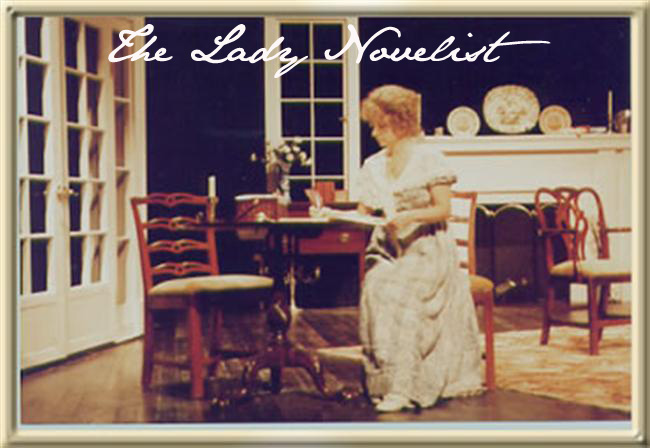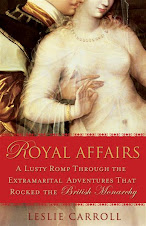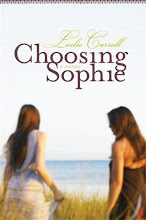I am deighted to welcome back to The Lady Novelist my fellow lady novelist Christine Trent.
Last winter, Christine made her historical fiction debut with THE QUEEN'S DOLLMAKER [you can read her interview about it here http://leslie-carroll.blogspot.com/2009/12/guest-interview-christine-trent-and.html], introducing a fascinating heroine, Claudette Laurent, with an unusual profession. Readers, myself included, wanted more. And Christine listened, penning a sort-of sequel, in her second novel, A ROYAL LIKENESS.
As heiress to the famous Laurent Fashion Dolls business, Marguerite Ashby’s future seems secure. But France still seethes with violence in the wake of the Revolution. And when Marguerite’s husband is killed during a riot, the young widow travels to Edinburgh and becomes apprentice to her old friend, Marie Tussaud, who has established a wax exhibition. When Prime Minister William Pitt commissions a wax figure of Admiral Nelson, Marguerite becomes immersed in a dangerous adventure—and earns the admiration of two very different men. And as Britain battles to overthrow Napoleon, Marguerite will find her loyalties under fire from all sides.
A ROYAL LIKENESS is both a love story and a war story. Did you get any flak from your editor about all the battle scenes that would necessarily be involved? If so, was she afraid that readers might not want to read a fairly gritty account of the Battle of Trafalgar, and prefer more bonnets and fewer bullets? Did you ever have those misgivings yourself; and if so, how did you decide to overcome them?
I’m fortunate in my editor at Kensington, Audrey LaFehr, in that she lets me write the book I want to write, and she trusts my judgment. However, I was personally a little challenged by the idea of a scene that was, as you say, gritty in nature. Knowing that I typically don’t read war-type novels myself, I tried to write a major historical naval battle in a way that would be appealing to the average female reader. It’s a little bit feisty heroine, a little bit romance-on-the-high-seas, and just a smidge of stark wartime terror.
One of the many historical figures you incorporate into A ROYAL LIKENESS is Admiral Nelson, the greatest hero of the era, who of course was killed during the Battle of Trafalgar. How much research did you do to create his character?
I tried to use as many of Nelson’s own words as possible in describing his death. My primary source for Nelson and the Battle of Trafalgar was Roy Adkins’ NELSON’S TRAFALGAR. In fact, I ended up having to buy this book twice.
Here’s a little known story: I was carrying this book around with me everywhere, and it was filled with post-it notes marking bits of information I wanted to use in my manuscript. I’d left the book on my nightstand on Christmas Eve last year while entertaining guests. I also left the lamp on. After all of my guests left, my husband and I watched television for a couple of hours to unwind, then went to bed. Lo and behold, one of my cats had managed to knock my lamp over, sending it and my book to the floor, with the shade flying off and the bare bulb landing on the book’s cover. It was smoking when I found it, and the book was charred almost halfway through. I was lucky the house didn’t burn down!
I kept the burnt book as a strange sort of souvenir of writing A ROYAL LIKENESS, and bought another copy for finishing my research. I consider it my most dangerous research!
You also bring Nelson’s notorious mistress Lady Emma Hamilton into your story. Offhand, I can think of only one other novelist who wrote a novel about Emma and Nelson—oh, wait—that that was me. :) What was behind your decision to include Emma as a character and how does Emma influence Marguerite in A ROYAL LIKENESS?
Honestly, part of what brought me to using Emma was having read your TOO GREAT A LADY. I thoroughly enjoyed your portrayal of Emma, and adopted your engaging form of her verbal slang. It was easy to slip Emma in, since she once witnessed waxwork monuments made to celebrate Nelson’s victory at the Battle of the Nile, and waxworks play such a large part in the novel.
Sensual, expressive, dependent Emma is a difficult character for independent, feisty Marguerite to understand. I think the two make for interesting opposites.
What major research did you have to do for this book? Did you stumble across anything really interesting that you didn’t already know?
Other than the vastly fascinating Battle of Trafalgar, the other very interesting area my research led me into was early 19th century entertainment. The typical Regency novel is full of card parties, meetings at gentlemen’s clubs, and dances at the local assembly rooms for the well-to-do, but I discovered that there were many entertainments on par with today’s carnivals, theatres, and stage shows.
Most obvious to the novel were the waxworks shows that were sometimes in permanent locations, or, in the case of Madame Tussaud, traveling exhibits. Waxworks exhibits were popular with aristocrats and commoners alike, and shrewd entrepreneurs like Tussaud would set up separate opening times – and admission fees – to service both classes of society.
I also learned about Phantasmagorias, which were wonderful projections of light and shadows using something called a “magic lantern” in order to resemble spirits, ghosts, and other figures. The Phantasmagoria show was the pre-cursor to today’s modern moving pictures.
Another fascinating entertainment that surfaced in my research was the geggy performance. These were traveling theater performances under big tents. Sort of like Shakespeare in the Park meets the Ringling Brothers Circus. They were very popular in Scotland.
A ROYAL LIKENESS is more or less a sequel to THE QUEEN’S DOLLMAKER, but was there anything else that sparked this book? Was it a character? An historical event? A scene you just couldn’t get out of your head?
When my editor said she wanted a sequel to THE QUEEN’S DOLLMAKER, I knew Marguerite’s story was the one that needed to be told. I also knew there were some delicious characters, including famed waxworker Madame Tussaud and everyone’s favorite loathsome aristocrat, Nathaniel Ashby, who deserved more stage space than they received in THE QUEEN’S DOLLMAKER.
Many readers are interested in the writer’s process. Each of us has her own roadmap and toolkit that leads us to the finished manuscript. I happen to know that you are the Queen of the Spreadsheet. Can you explain how you use the technique to outline your novel?
This is a crown I proudly wear. :) I tend to plot my books out in heavy detail prior to sitting down and writing the first chapter. Once I know exactly what the story will look like I open my infamous writing spreadsheet. I calculate roughly how many words I think the manuscript will be (about 3,000 words for every page of synopsis). Then I figure out how long it will take to write my book if I write 5,000 words per week consistently. For each day of writing, I drop in the number of words written, and the spreadsheet tracks what I’ve written by day and by week, and how many words I have left to complete the manuscript. It also gives me good stats on what my best writing day tends to be (Sunday), and what my worst day is (Wednesday). It gives me a great sense of satisfaction to see my total number of words going up as I march towards my goal. It also keeps me from falling too far behind.
I know there are writers out there grinding their teeth to read about my obsessive-compulsive process. I know how to take all the fun out of things!
What are you currently reading? On balance, how much would you say you read for pleasure and how much for research—or is there a constant overlap? Do you (like I) actually find research pleasurable, depending on the subject?
Actually, I keep my research books completely separated from my pleasure reading books. Pleasure reading books stay upstairs, all research remains downstairs. As my deadlines begin to run closer and closer together, I find that I have less time for pleasure reading. After a day of staring at the computer screen and poring through maps, papers, and research books, it’s hard to have the energy to pleasure read.
That said, I’m just now starting Ken Follett’s latest, FALL OF GIANTS. I’ve also kept up with the latest from Alison Weir (CAPTIVE QUEEN) and Philippa Gregory (THE WHITE QUEEN, THE RED QUEEN), and I continue to order books that pile up on my nightstand!
What are you working on now and what can we expect to see from you next?
I’ve just wrapped up my next novel, tentatively titled THE PRINCE’S PAVILION, about a cloth merchant named Annabelle Stirling. Thanks to her patron and great architect, John Nash, Belle Stirling is a rising star in the homes of London’s fashionable elite. Even the Prince Regent wants her elegant, high quality fabrics used in the decoration of his new palace, Brighton Pavilion. But when those closest to her conspire against Parliament, she risks losing her reputation, her business. . .and even her life.
This story will be a look at the Regency England you’ve never known: the exploding cloth manufacturing industry, the deadly Luddite riots, and the radical Cato Street Conspiracy all play parts in the novel.
Next up, I’m working on a novel that will take place in Victorian England. You can expect a heroine with an unusual profession….and an unusual hobby. Stay tuned!
Please visit http://www.christinetrent.com/ for more information about Christine’s books.
+for+blog+header+copy.jpg)

.jpg)
.jpg)




